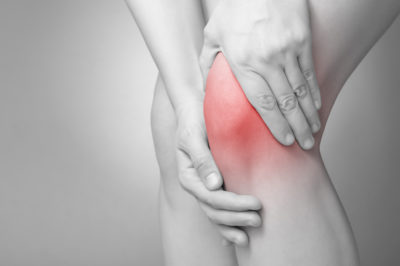
Knee pain can be caused by disease or injury. The most common disease affecting the knee is osteoarthritis. Knee injuries can occur as the result of a direct blow or sudden movement that strains the knee beyond its normal range of movement. Knee pain caused by an injury is most often associated with knee cartilage tears, such as meniscal tears, or ligament tears, such as anterior cruciate ligament tears. Our friends at the American Physical Therapy Association have provided some helpful information to keep you well informed and aide in any questions you may have associated to knee Pain.
What is Knee Pain?
Knee pain can be caused by disease or injury. Knee pain can restrict movement, affect muscle control, and reduce the strength and endurance of the muscles that support the knee. The most common disease affecting the knee is osteoarthritis, which is caused by the cartilage in the knee gradually wearing away, resulting in pain and swelling. Knee injuries can occur as the result of a direct blow or sudden movement that strains the knee beyond its normal range of motion, as can happen in sports, recreational activities, a fall, or a motor vehicle accident. Knee pain caused by an injury often is associated with tears in the knee cartilage or ligaments. Knee pain also can be the result of repeated stress, as often occurs with the kneecap, also known as patellofemoral pain syndrome. Very rarely, with extreme trauma, a bone may break at the knee.
How Does it Feel?
You may feel knee pain in different parts of your knee joint, depending on the problem affecting you. Identifying the location of your pain can help your physical therapist determine its cause.
How Is It Diagnosed?
Your physical therapist will make a diagnosis based on your symptoms, medical history, and a thorough examination. X-ray and MRI results may also be used to complete the diagnosis.
How Can a Physical Therapist Help?
Based on the evaluation, your physical therapist will develop a customized rehabilitation program, including a specific set of knee exercises, for you. If you already have knee problems, your physical therapist can help with a plan of exercise that will strengthen your knee without increasing the risk of injury or further damage. As a general rule, you should choose gentle exercises such as swimming, aquatic exercise, or walking rather than jarring exercises such as jogging or high-impact aerobics.
Consult your physical therapist about specific ways to maintain your knee health following injury or surgery. Your physical therapist has the relevant educational background and expertise to evaluate your knee health and to refer you to another health care provider if necessary.
Can this Injury or Condition be Prevented?
Ideally, everyone should regularly get 3 types of exercise to prevent injury to all parts of the body, including the knees:
- Range-of-motion exercises to help maintain normal joint movement and relieve stiffness.
- Strengthening exercises to keep or increase muscle strength.
- Aerobic or endurance exercises (such as walking or swimming) to improve function of the heart and circulation and to help control weight. Weight control can be important to people who have arthritis because extra weight puts pressure on many joints, including the knee.
To keep knee pain and other musculoskeletal pain at bay, it’s important to maintain an overall healthy lifestyle, exercise, get adequate rest, and eat healthy foods. It’s also important for runners and other athletes to perform physical therapist-approved stretching and warm-up exercises on a daily basis—especially before beginning physical activity. For more information check out Move Forward (www.moveforwardpt.com) published by APTA, it’s a great resource if you have any questions regarding pain and physical therapy!
“Knee Pain.” Move Forward PT. American Physical Therapy Association, 9 Aug. 2011. Web. 2 June 2016.

